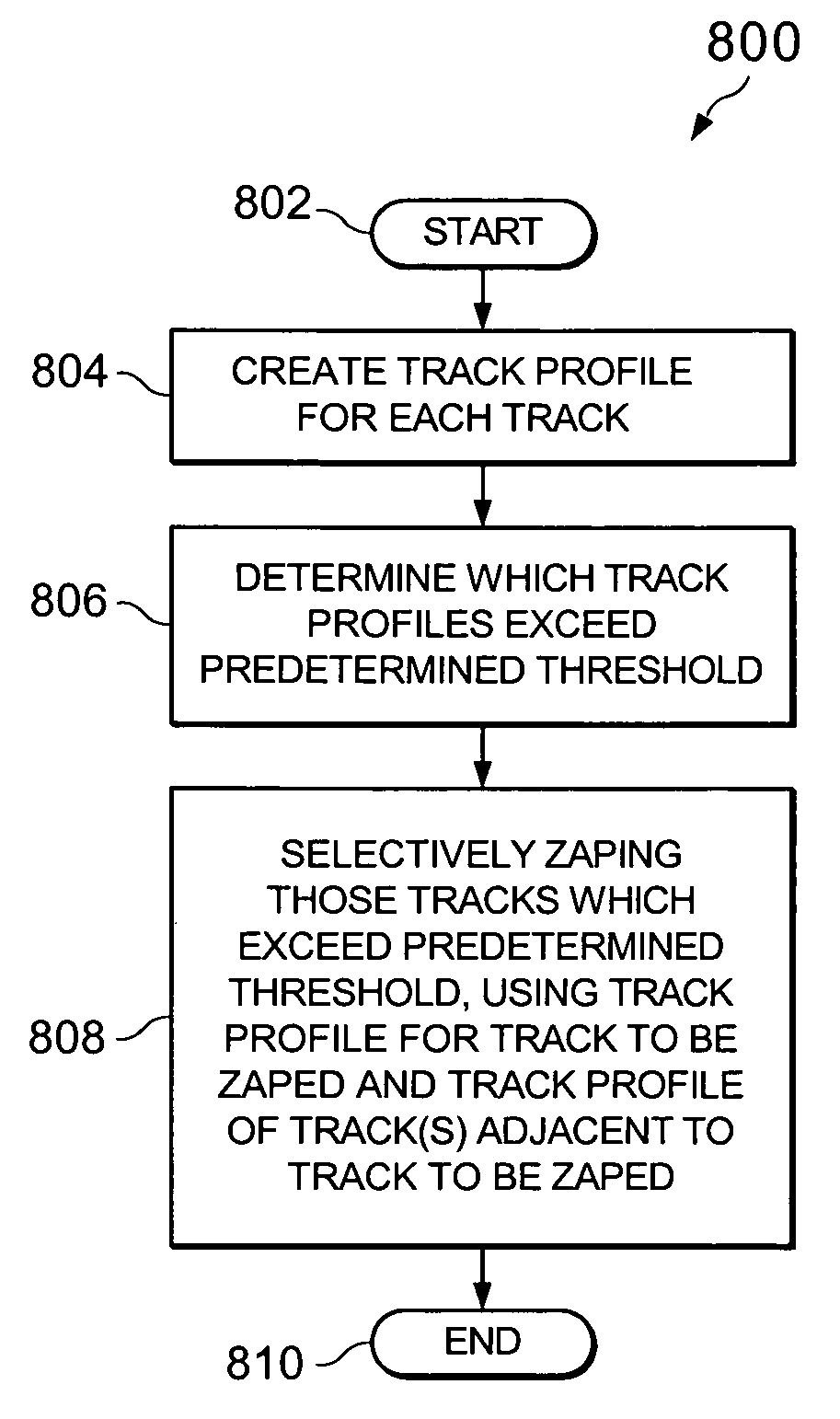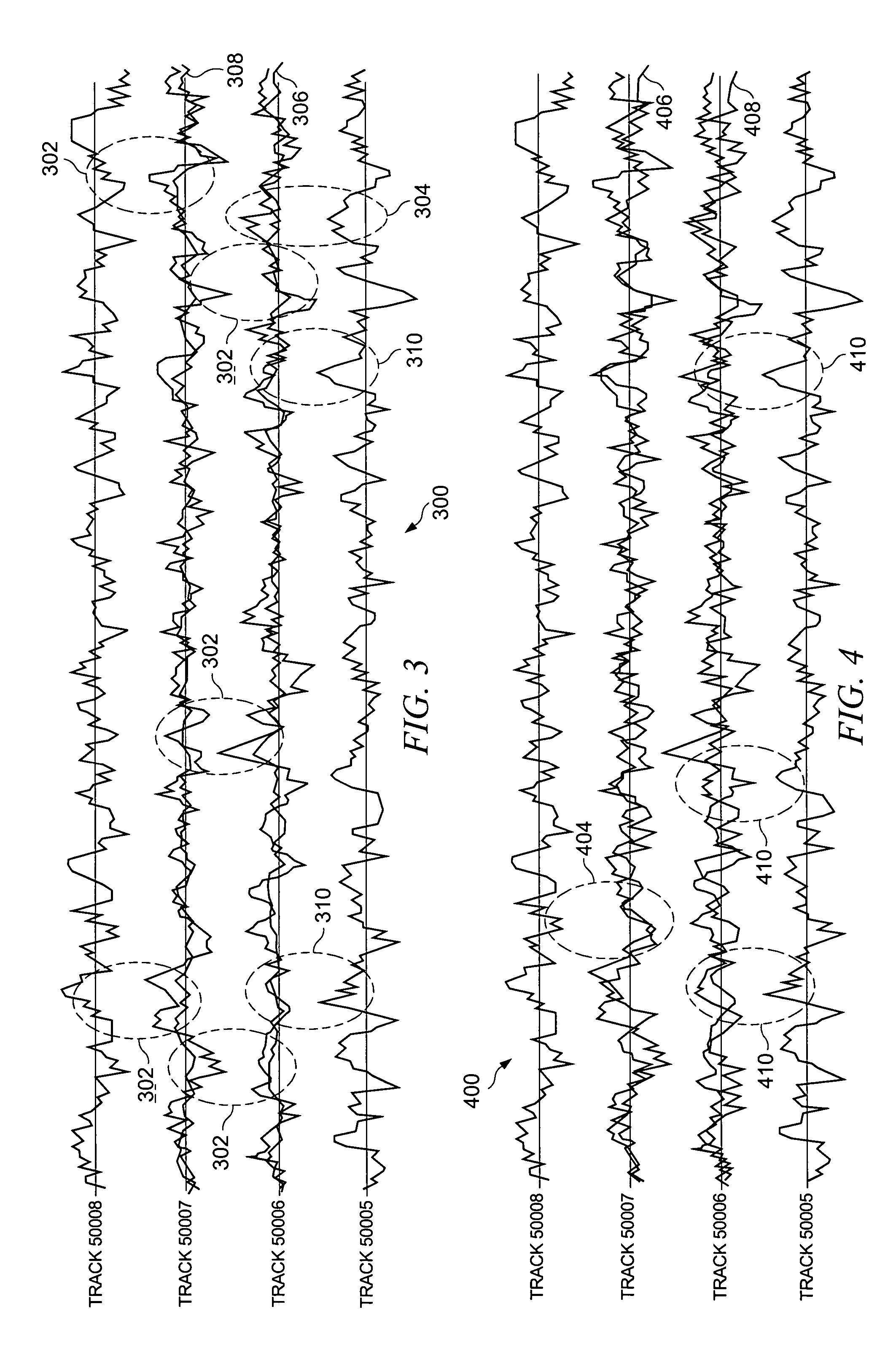System and method for reducing ZAP time and track squeeze in a data storage device
a data storage device and zap time technology, applied in the field of disk drive data storage systems, can solve the problems of writing-in errors, head following, writing-in errors, etc., and achieve the effect of reducing the overall time required and mitigating ac track squeeze issues
- Summary
- Abstract
- Description
- Claims
- Application Information
AI Technical Summary
Benefits of technology
Problems solved by technology
Method used
Image
Examples
Embodiment Construction
[0021]The amount of time required by conventional ZAP methods used in reducing repeatable runout errors (RRO) in a data storage device is steadily increasing as data storage densities are increasing. One way of reducing the ZAP time is by using a technique herein described as ZAP-By-Exception (ZBE), which selectively ZAPs those tracks that have large PES and tend to cause track encroachment problems. In one ZBE embodiment, ZAP is applied to every track in the outside diameter (OD) zones since PES RRO is typically large at almost every track in such OD zone. In other zones, the ZAP is activated only on those tracks having a large PES or large mean of PES. In this later situation, ZAPing the track may bring down the PES RRO, and the 3-sigma of AC track squeeze value (AC SQ). However, at certain sectors, the ZBE processing could actually worsen the AC SQ. The following example will illustrate this point.
[0022]Referring now to FIG. 2, there is shown at 200 an example where ZAP compensat...
PUM
| Property | Measurement | Unit |
|---|---|---|
| threshold | aaaaa | aaaaa |
| pressure | aaaaa | aaaaa |
| aerodynamic | aaaaa | aaaaa |
Abstract
Description
Claims
Application Information
 Login to View More
Login to View More - R&D
- Intellectual Property
- Life Sciences
- Materials
- Tech Scout
- Unparalleled Data Quality
- Higher Quality Content
- 60% Fewer Hallucinations
Browse by: Latest US Patents, China's latest patents, Technical Efficacy Thesaurus, Application Domain, Technology Topic, Popular Technical Reports.
© 2025 PatSnap. All rights reserved.Legal|Privacy policy|Modern Slavery Act Transparency Statement|Sitemap|About US| Contact US: help@patsnap.com



